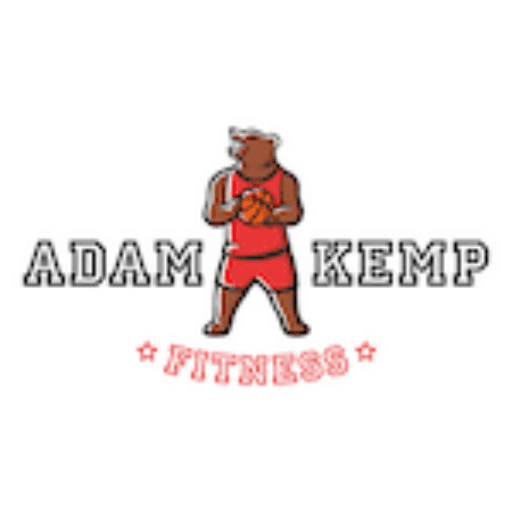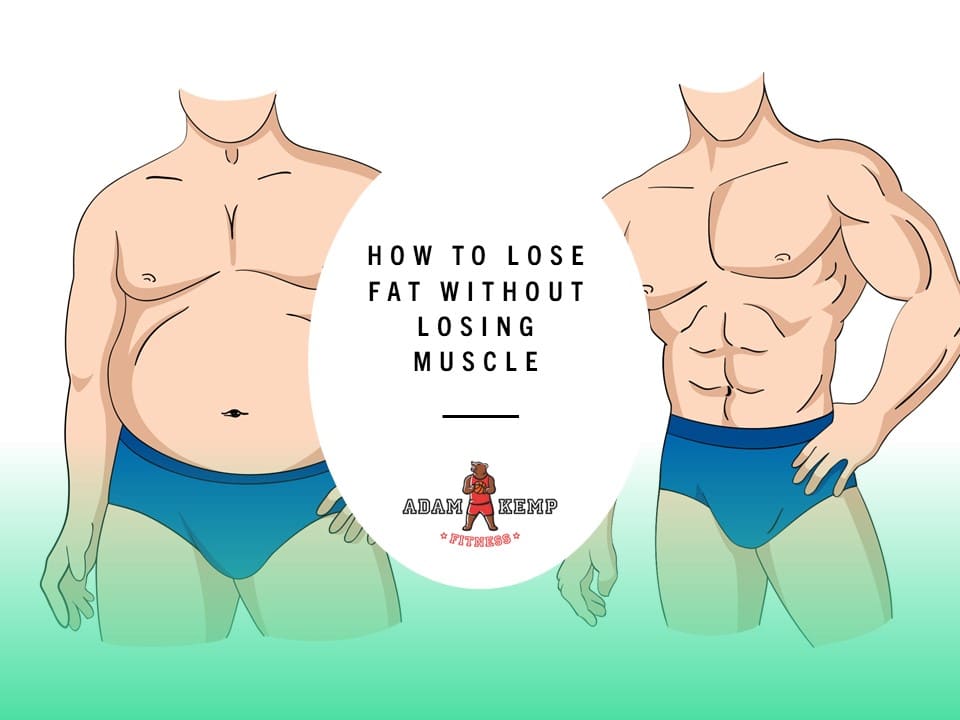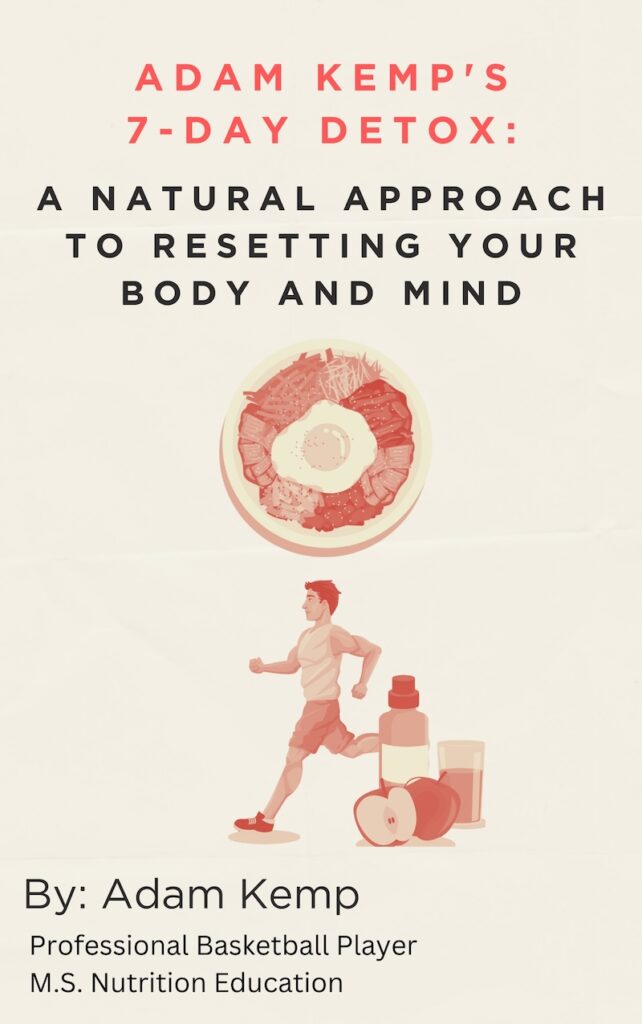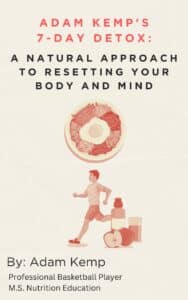How to Lose Fat and Keep Muscle: The Ultimate Guide
Hello! I’m Adam Kemp, and as a professional basketball player, I’ve spent my whole career trying to reduce my body fat percentage while building or maintaining as much muscle as possible.
If you are tired of feeling like you have to choose between losing fat and maintaining muscle mass, I believe my tips may offer you the solution you are looking for!
As most people know, maintaining muscle mass during a cutting phase is crucial.
Studies have shown that muscle tissue is metabolically active, meaning it burns calories even at rest, which helps sustain a higher RMR.
Without focusing on muscle preservation, you may reduce your resting metabolic rate (RMR), making it difficult to maintain any fat loss program.
By using my evidence-based strategies to help you lose fat while maintaining your muscle mass, I believe we can create a healthier, stronger, and more confident you.
Understanding Fat Loss Without Losing Muscle

Before diving into the specifics, it’s important to understand the science behind fat loss and muscle preservation.
To lose fat, you need to be in a caloric deficit, which means you’re burning more calories than you consume.
This can be achieved through a combination of diet and exercise.
However, when you’re in a caloric deficit, your body may start to break down muscle for energy, which is obviously not ideal.
Fortunately, research indicates that muscle loss during weight loss can be minimized by following certain nutritional and exercise strategies.
A study by Phillips and Van Loon (2011) highlights that maintaining a high protein intake is essential during caloric restriction to preserve lean body mass.
Additionally, engaging in regular resistance training also signals to your body that it still needs your muscle mass, thereby reducing the likelihood of muscle breakdown.
- The primary concepts behind losing fat while maintaining muscle are providing your body with adequate protein and engaging in resistance training.
- Doing so ensures that your body burns fat for energy instead of muscle, helping you achieve a leaner, more muscular physique.
How to Cut Fat Without Losing Muscle
Losing fat while maintaining muscle is the key to achieving a lean, strong, aesthetic physique.
The right approach balances proper nutrition, strategic workouts, and smart recovery methods to ensure fat loss without sacrificing hard-earned muscle.
By focusing on a calorie deficit without extreme restrictions and incorporating strength training, you can optimize body composition and retain muscle mass while shedding unwanted fat.
Nutrition Strategies to Lose Fat and Keep Muscle
As a Nutrition Educator with a Master’s Degree in Nutrition Education, I truly understand that developing strategic dietary approaches for individual health and fitness goals is very important.
If your goal is to maintain muscle while losing fat, the foods you eat and how you structure your diet will play a critical role in determining whether you retain your hard-earned muscle while shedding fat.
Proper nutrition not only fuels your workouts but also helps maintain muscle protein synthesis, supports recovery, and keeps your metabolism running efficiently.
Below, we will explore key nutritional strategies that can help you cut fat without losing muscle, including optimal protein intake, creating a moderate caloric deficit, balancing macronutrients, and considering intermittent fasting.
By following these evidence-based guidelines, you can optimize your diet for maximum muscle preservation and effective fat loss.
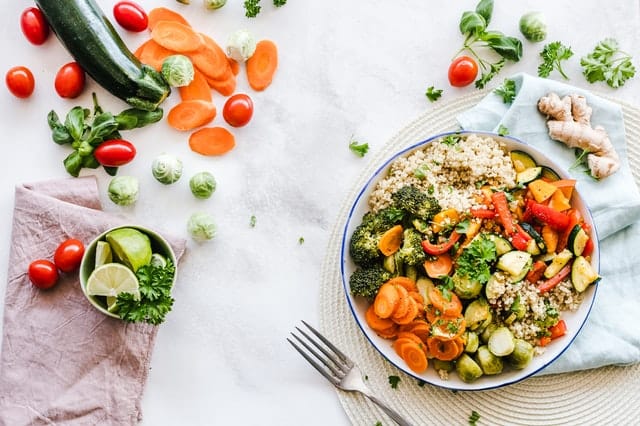
Caloric Deficit
Creating a moderate caloric deficit is key to losing fat while maintaining muscle. Aim for a caloric deficit of 500-700 calories per day.
Research has indicated that a slow rate of weight loss, around 0.7% of your body weight per week, helps you maintain the most muscle mass.
For most people, this translates to losing about one to two pounds per week.
Rapid weight loss can lead to muscle loss, so it’s important to approach your cut gradually.
Macronutrient Balance
Balancing your macronutrients is vital for muscle preservation.
Although many people believe carbohydrates can negatively impact weight loss goals, carbohydrates play a crucial role in restoring muscle glycogen stores after training, which is essential for maintaining strength during a calorie deficit.
So, I suggest you aim for around 5 grams of carbohydrates per kilogram of body weight per day, focusing on nutrient-dense sources like oatmeal, beans, yams, sweet potatoes, potatoes, and quinoa.
Dietary fats are also important for overall health and should make up about 20% of your daily caloric intake.
Consuming healthy dietary fats from sources like peanuts, almonds, cashews, and fish ensures you get essential fatty acids and supports hormone production.
Protein Intake
Protein is the cornerstone of losing fat but keeping muscle, and consuming adequate amounts of protein will make the biggest difference in your body composition.
It is crucial to increase your protein intake to a minimum of 1.2 grams per kilogram of body weight, with an ideal target of 1.8 grams per kilogram.
My personal recommendation for how much protein you need to build muscle is between 1.6 to 2.2 grams of protein for every 1 kg of body weight, so my recommendation for maintaining muscle while losing weight is slightly lower.
The reason for that is that 1.2 to 1.8 grams of protein per kilogram of body weight per day should provide enough protein to support your muscle tissue but enough room for additional carbohydrates in your diet to support daily energy needs.
Carbohydrate Timing and the Importance of Healthy Complex Carbs
Strategic carbohydrate timing is essential when cutting fat without losing muscle.
Properly timing your carbohydrate intake ensures your muscles receive the energy they need for performance and recovery without unnecessary fat gain.
Consuming complex, fiber-rich carbohydrates before and after workouts helps fuel training sessions and replenishes muscle glycogen, preventing excessive muscle breakdown.
Focus on nutrient-dense complex carbohydrates such as sweet potatoes, quinoa, oats, lentils, beans, and fiber-rich vegetables like spinach, kale, and broccoli.
These foods provide steady energy, prevent blood sugar spikes, and support digestion, helping you stay full and energized throughout the day.
Eating the bulk of your carbohydrates around your workouts—both before for fuel and after for recovery—can optimize performance and muscle retention while maintaining a caloric deficit.
On rest days, slightly reducing carbohydrate intake while increasing fibrous vegetables can help manage hunger and maintain metabolic health without compromising muscle tissue.
Hydration
Staying hydrated is essential for overall health and muscle function.
Dehydration can impair muscle performance and recovery, making it harder to maintain muscle mass during a cut.
You should aim to drink at least 8 cups of water daily, and more if you are particularly active, as proper hydration supports metabolic processes and helps maintain muscle cell volume.
Water is the best drink for hydration, and you can add a bit of salt to your water throughout the day to support proper hydration.
If you struggle to drink water but enjoy sports drinks, low-sugar, natural options like Gatorade Fit and Prime Hydration are two of the best sports drinks.
Herbal teas and coconut water are other good natural hydration sources.
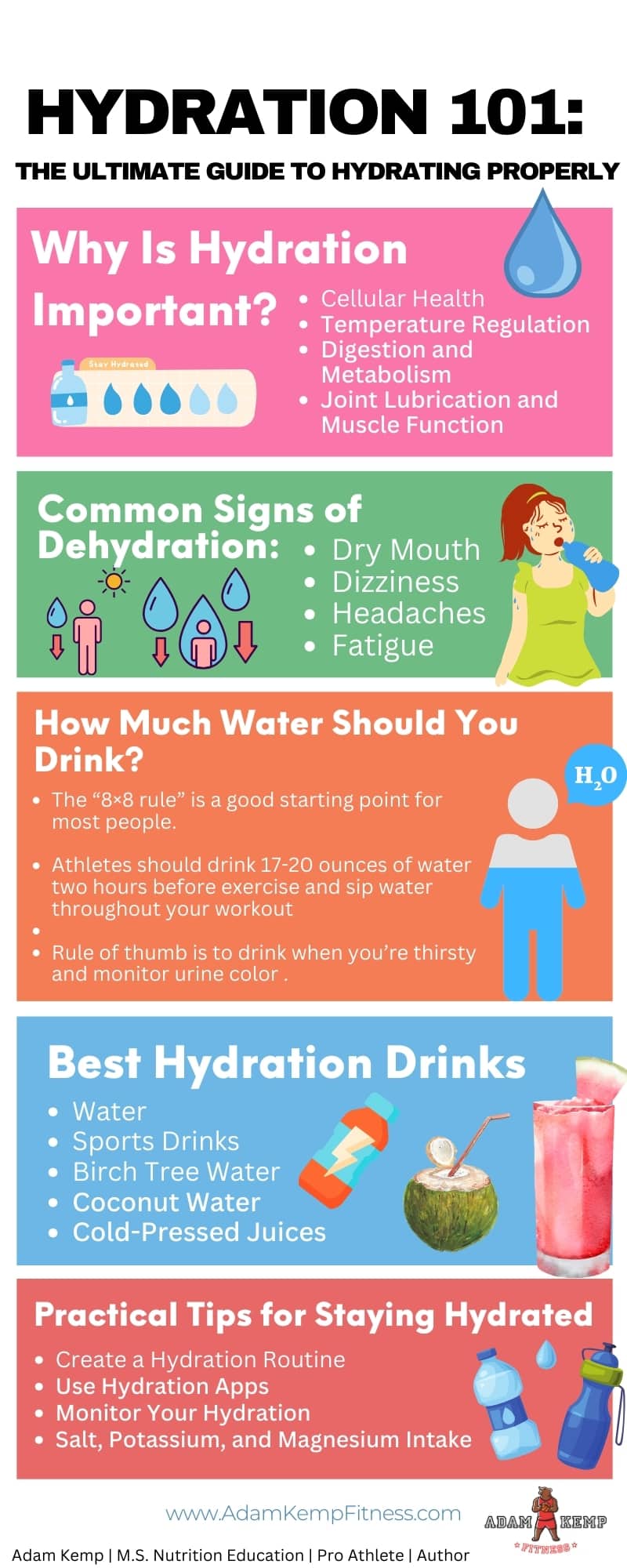
Intermittent Fasting
I love intermittent fasting and have credited it with a lot of my success and general health improvements throughout the years.
Additionally, intermittent fasting can be an effective strategy for weight loss and muscle maintenance when accompanied by resistance training.
Research by Tinsley and La Bounty (2015) shows that intermittent fasting can improve health-related biomarkers, decrease fat mass, and maintain muscle mass.
The most commonly used method, and the method that I use in the summers between my basketball seasons, involves an 8-hour feeding window and a 16-hour fasting period, during which only water or black coffee is consumed.
Another powerful tool that can be incorporated with intermittent fasting is fasted cardio, which involves performing low-to moderate-intensity aerobic exercise on an empty stomach.
Many people find that fasted cardio helps accelerate fat loss by increasing fat oxidation while maintaining muscle mass when combined with proper nutrition and resistance training.
However, it’s important to monitor energy levels and ensure you’re consuming enough protein and nutrients in your eating window to support recovery and muscle retention.
As my own experiences have shown and research supports as well, combining intermittent fasting with the previously mentioned nutritional strategies can optimize muscle preservation during weight loss.
Best Supplements for Losing Fat and Keeping Muscle
While a well-balanced diet without optimal nutrient timing is the key to losing fat and maintaining muscle, supplements play a very supportive role in optimizing your results.
By incorporating the right supplements into your regimen, you can keep muscle while losing fat.
Personally, I believe I have made some incredible improvements with my body over the years based on my approach to supplements.
However, it is important to remember that your approach to physical activity, sleep, exercise, and nutrition are significantly more important than the supplements you use.
With that being said, there are a variety of supplements for weight loss and muscle building that can actually help you keep muscle while cutting fat:
Protein Powder
Protein powder is one of the most convenient and effective supplements for maintaining muscle mass while cutting fat.
Protein powders can serve several roles for people trying to maintain muscle while losing fat, but primarily, they help you meet your daily protein requirements, which is crucial for muscle protein synthesis and preservation.
Moreover, research indicates that supplementing with protein powder can enhance muscle mass retention, especially when dietary protein intake might be insufficient due to caloric restriction.
There are several other reasons to consume a protein powder supplement when trying to lose fat but keep muscle, including:
- Act as a simple, effective metabolism-boosting breakfast
- Curbs appetite as an on-the-go protein snack
- Rapidly promotes muscle protein synthesis after workouts
- Supports overall muscle development and maintenance
Personally, I often consume one to two scoops of my favorite protein powder (Garden of Life Raw Protein and Greens) as a metabolism-boosting breakfast.
Protein has the highest Thermic Effect on Food, so consuming around 30 grams of protein instead of your usual breakfast can provide a simple, appetite-satiating, metabolism-boosting, muscle-preserving option.
If you are new to protein powder supplements, vegan and whey protein powder are the two primary options.
Vegan protein powders, such as Garden of Life Raw Protein & Greens, are excellent options for those looking to avoid dairy-based whey protein, and they often contain higher micronutrient contents than whey protein supplements.
Last update on 2025-07-03 / This article includes affiliate links/Images via Amazon Product Advertising API. I may earn commissions on purchases made through these links.
BCAA & EAA Supplements
Branched-Chain Amino Acids (BCAAs) are essential amino acids (EAAs) that the body cannot synthesize on its own and must be obtained through diet or supplements.
More importantly, BCAAs play a significant role in muscle protein synthesis and can help reduce muscle protein breakdown during caloric deficits.
Studies have shown that BCAA supplementation can support muscle retention during weight loss (Dudgeon et al., 2016).
However, for optimal benefits, a full-spectrum EAA supplement is often the better choice, as all essential amino acids contribute to muscle repair and growth.
In my opinion, the best amino acid supplements are Xtend and RSP Nutrition AminoLean.
Xtend BCAAs is a traditional BCAA supplement that includes additional muscle-promoting and non-stimulant energy-boosting ingredients like Citrulline Malate, L-Glutamine, and electrolytes for hydration.
Last update on 2025-07-03 / This article includes affiliate links/Images via Amazon Product Advertising API. I may earn commissions on purchases made through these links.
On the other hand, RSP AminoLean is an EAA supplement that contains a targeted weight-loss matrix that includes caffeine and fat-burning ingredients like green tea extract, green coffee bean extract, and CLA.
Last update on 2025-07-03 / This article includes affiliate links/Images via Amazon Product Advertising API. I may earn commissions on purchases made through these links.
CLA
Conjugated Linoleic Acid (CLA) is a fatty acid known for its ability to reduce body fat and support muscle retention by inhibiting the enzyme lipoprotein lipase, which promotes fat storage.
Research has shown that CLA supplementation can be particularly effective in aiding fat loss and preserving muscle mass during periods of caloric restriction, making it an ideal choice for those looking to cut without losing muscle.
My personal experience with CLA has been positive, as I’ve used it intermittently over the years.
Additionally, I often include products like RSP AminoLean, which contain CLA, in my supplement regimen.
For effective use of CLA supplements in maintaining muscle while losing fat, consistent long-term use is crucial.
Regular use for at least 12 months has been shown to produce noticeable improvements in body composition, and a commonly recommended dosage is 3 to 6 grams per day.
Starting with a lower dosage of around 3 grams per day is advisable, gradually increasing to a maximum of 6 grams per day if well-tolerated.
Taking CLA with meals can help improve absorption and reduce potential gastrointestinal discomfort.
Sports Research Max Potency CLA is a recommended product for those looking to try CLA supplementation.
As always, consult with a healthcare professional before starting any new supplement regimen to ensure it is appropriate for your individual health needs and goals.
Last update on 2025-07-03 / This article includes affiliate links/Images via Amazon Product Advertising API. I may earn commissions on purchases made through these links.
Creatine Monohydrate
Lastly, creatine monohydrate is a well-researched supplement known for its ability to increase muscle strength and size.
It works by increasing the amount of ATP (adenosine triphosphate) in your muscles, providing more energy for muscle contractions.
Creatine can be particularly beneficial during a cut, as it helps maintain strength and muscle mass despite a caloric deficit (Rawson & Volek, 2003).
I’ve used several creatine monohydrate supplements, and my favorite is Optimum Nutrition Micronized Creatine Monohydrate.
Last update on 2025-07-03 / This article includes affiliate links/Images via Amazon Product Advertising API. I may earn commissions on purchases made through these links.
Best Exercise Programs to Keep Muscle While Losing Fat
Maintaining muscle mass while losing fat isn’t solely dependent on nutrition; your training regimen plays an equally vital role.
The right combination of resistance training and cardiovascular exercise can help signal to your body that muscle mass is needed, thus preventing muscle breakdown.
If you are looking for a specific online workout program that will help you cut fat and keep muscle, I suggest you check out the workouts in my Workout of the Day category.
The 645 Workout Program is my favorite online workout program because it combines several important aspects of health and fitness, such as mobility, stability, strength, and power, into convenient 45-minute workouts.
If you are planning to continue your own exercise routine, here are some tips to make it easier for you to cut fat without losing muscle:
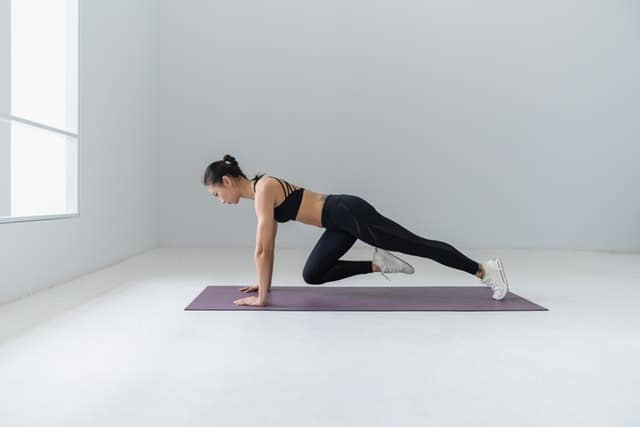
Progressive Overload
Maintaining or increasing training intensity through progressive overload is crucial during a cut.
Progressive overload involves gradually increasing the weight, frequency, or number of repetitions in your strength training routine to continuously challenge your muscles.
This method signals to your body that your muscle mass is needed, even during a caloric deficit.
Ensuring that your workouts remain challenging can help preserve muscle mass and support continued strength gains.
By incorporating these training approaches, you can effectively lose fat while preserving muscle, leading to a leaner and stronger physique.
Regularly adjusting your workout plan to maintain intensity and variety will help you achieve your body composition goals.
Strength Training
Strength training is essential for preserving muscle mass during a calorie deficit because it stimulates muscle protein synthesis and the maintenance of muscle mass.
Research has shown that engaging in regular resistance training can significantly reduce muscle loss during periods of weight loss.
To increase HGH naturally and maintain muscle while losing weight, you should focus on compound exercises like squats, deadlifts, and bench presses, which target multiple muscle groups and provide a strong anabolic stimulus.
You also have the opportunity to choose from free weights, workout machines, and body weight exercises.
People often debate between exercise machines vs free weights, but I think you can use all types of exercises to get your dream body.
All these options are effective, but weight training with free weights has the most benefits for people trying to maintain muscle while losing fat because they produce the highest hormonal stimulus that signals the body to maintain muscle.
Cardio
Cardiovascular exercise is important for burning fat, but it needs to be balanced to avoid excessive muscle loss.
High-intensity interval training (HIIT) is an effective form of cardio, and research indicates that it helps to burn calories and increase metabolism without breaking down muscle mass.
Moreover, combining weight training with HIIT workouts such as CrossFit can be an excellent way to promote muscle hypertrophy and weight loss.
To achieve a well-rounded body, it’s essential to include both resistance training and cardio workouts in your workout regimen.
Lifestyle Tips to Preserve Muscle During Fat Loss
In addition to nutrition and exercise, certain lifestyle changes can significantly impact your ability to lose fat while preserving muscle mass.
Incorporating healthy habits that promote overall health and well-being will improve your efforts and support muscle retention during a caloric deficit.
Get Enough Rest and Sleep

Adequate rest and sleep are critical for muscle recovery and preservation.
During sleep, your body undergoes essential repair processes that help maintain muscle mass, and research suggests that sleeping 7-9 hours per night can optimize these processes and support muscle health.
Maintaining a regular sleep schedule, creating a restful environment, using natural sleep aids, and avoiding stimulants before bedtime can help you sleep better.
Quonol Magnesium Glycinate is an excellent natural sleep aid that promotes relaxation, reduces muscle cramps, and improves sleep quality.
Magnesium plays a key role in regulating neurotransmitters and stress hormones, which can enhance recovery, support fat loss, and help preserve muscle during a caloric deficit.
Last update on 2025-07-03 / This article includes affiliate links/Images via Amazon Product Advertising API. I may earn commissions on purchases made through these links.
Stress Management
Stress is also a major factor in fat loss and muscle preservation, and too much stress causes the body to release
Chronic stress can negatively affect muscle preservation by increasing cortisol levels, which can lead to muscle breakdown and fat retention, (a hormone that can break down muscle and increase fat storage) and negatively impacts sleep quality.
Incorporating natural stress remedies such as meditation, prayer and progressive muscle relaxation can be incredibly helpful.
Limit Alcohol Consumption
Alcohol can interfere with fat loss and muscle preservation efforts.
While moderate consumption may not significantly impact your goals, excessive alcohol intake can lead to muscle breakdown and hinder fat loss.
Limiting alcohol consumption or choosing healthier options, like a glass of red wine, can mitigate these effects.
Compared to other alcoholic beverages, moderate red wine consumption offers some health benefits, such as antioxidants, which can support overall health.
However, even drinking red wine before bed, as many people love to do, can prevent muscle building and increase fat development, so I suggest avoiding it.
By incorporating these lifestyle changes into your routine, you can enhance your efforts to preserve muscle while losing fat.
These habits support your overall well-being and help you achieve a leaner, healthier physique.
Monitor Progress and Adjust as Needed
Regularly assessing your body composition and making necessary adjustments are key to losing fat while preserving muscle mass.
To get the best results, you should use body composition analysis tools like bioelectrical impedance analysis (BIA), dual-energy X-ray absorptiometry (DEXA), or skinfold calipers to monitor muscle mass and body fat percentage.
I have used a few different body analysis tools throughout my career as a professional athlete, and I currently own a BodyPedia Smart Scale.
A few ways you can monitor your progress include scheduling regular weigh-ins and monthly body composition assessments.
Additionally, keeping a workout logbook to track exercises, sets, reps, and weights helps monitor progress and maintain or increase training intensity.
Fitness trackers like Whoop, Oura Ring, Fitbit, or Apple Watch can also provide valuable insights into heart rate variability, sleep quality, daily activity levels, and calorie expenditure.
These tools help fine-tune your training and recovery by ensuring you’re balancing intensity and rest appropriately.
By consistently monitoring progress and making data-driven adjustments, you can effectively understand how your body responds to nutrition and training strategies and adjust your approach if you notice signs of muscle loss, such as a drop in strength or muscle size.
Final Thoughts: Best Ways to Lose Fat and Keep Muscle

As my experience of having a 10+ year professional basketball career has shown me, achieving a lean, muscular physique requires a strategic balance of nutrition, exercise, and lifestyle adjustments.
By focusing on preserving muscle mass while losing fat, you can optimize your body composition and ensure long-term success.
Incorporating cardiovascular exercise, especially high-intensity interval training (HIIT), can enhance fat loss without compromising muscle mass.
Additionally, supplements like protein powder, EAAs, BCAAs, CLA, and creatine monohydrate can support your efforts, while lifestyle changes such as adequate sleep, stress management, and proper hydration are crucial for overall health and muscle preservation.
Consistently monitoring your progress and being flexible with your approach will help you stay on track, and by making data-driven adjustments, you can effectively navigate your cutting phase while retaining muscle mass.
Remember to celebrate small victories along the way and stay patient, as achieving a leaner, healthier body is a journey that requires dedication and consistency.
Embrace these strategies to transform your physique, boost your metabolism, and enhance your athletic performance, leading to a stronger, more confident you.
This website does not provide medical advice. This website site does contain affiliate links, and purchases may earn a commission.
Read my Medical Disclaimer, Review Disclaimer, and Publishing Policies for more details. Use of this site indicates acceptance of these terms.
